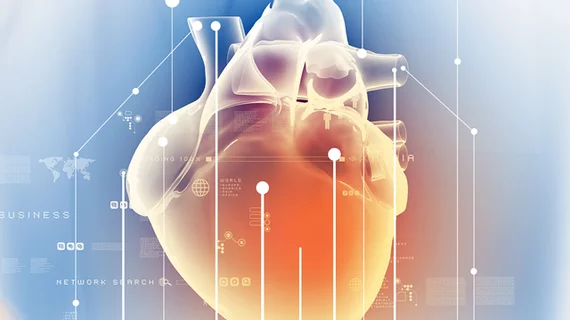Echocardiography most utilized modality for heart failure patients in Canada
Resting echocardiography stands head above shoulders as the most used imaging modality for patients with heart failure in Canada, according to a 14-year analysis published in JAMA Network Open.
In fact, use of the modality rapidly increased up until 2011, when CT and MRI started to gain popularity. Despite plateauing after 2011, Juarez R. Braga, MD, with the University Health Network’s Division of Cardiology in Toronto, Ontario, Canada, and colleagues wrote, echo remains the most widely used modality, exceeding the total spending on any other technique.
In Canada, there have been many concerns about the “excessive volume” of imaging procedures “without justification for their use,” the authors wrote.
Concern is especially high in Ontario, the authors added, where initiatives have been put into place to control cardiac imaging as a whole, including fee cuts, mandatory prior authorization and an accreditation program for the “provision” of echocardiography.
The group looked at data from more than 882,000 adults (median age 76 years old) who presented with heart failure between 2002 and 2016.
All patients underwent an exam with one of the following modalities: resting and stress echocardiography, myocardial perfusion scintigraphy and invasive coronary angiography or coronary computed tomography angiography (CCTA), cardiac MRI (CMRI) and cardiac positron emission tomography (CPET).
Braga and colleagues found the use of resting echocardiography jumped from 386 tests per 1,000 patients in 2002 to 533 per 1,000 patients in 2011. Use dropped by 59.5 tests per 1,000 patients in 2012, following the start of an echocardiography accreditation program. After this program, use of the modality experienced an annual decrease of 16.8 tests per 1,000 patients.
“The higher use of resting echocardiography compared with all the other modalities may be because echocardiograms are noninvasive and because there is a perception among health care professionals that the price per unit is low compared with other imaging techniques,” the authors wrote.
But, as the researchers found, resting echocardiography was responsible for about 53% of the total budget spent on cardiac imaging in 2016. Myocardial perfusion scintigraphy and invasive coronary angiography made up 25% and 17%, respectively. Advanced modalities, such as CCTA, CMRI and CPET contributed a mere 5% of all cardiac imaging expenses in 2016.
In an invited commentary, Vinay Kini, MD, MSHP, with the University of Colorado Anschutz Medical Campus, described the findings of the study as important. However, she noted, as with other studies analyzing imaging trends, it did not investigate if imaging was beneficial to patients nor did it establish “causal connections” to the numerous factors that may have impacted “changes in the use of testing.”
“To guide future policies on the use of cardiovascular imaging, a better understanding of the causal factors affecting cardiac imaging use and the effect of changes in use on imaging quality is needed,” Kini concluded.

